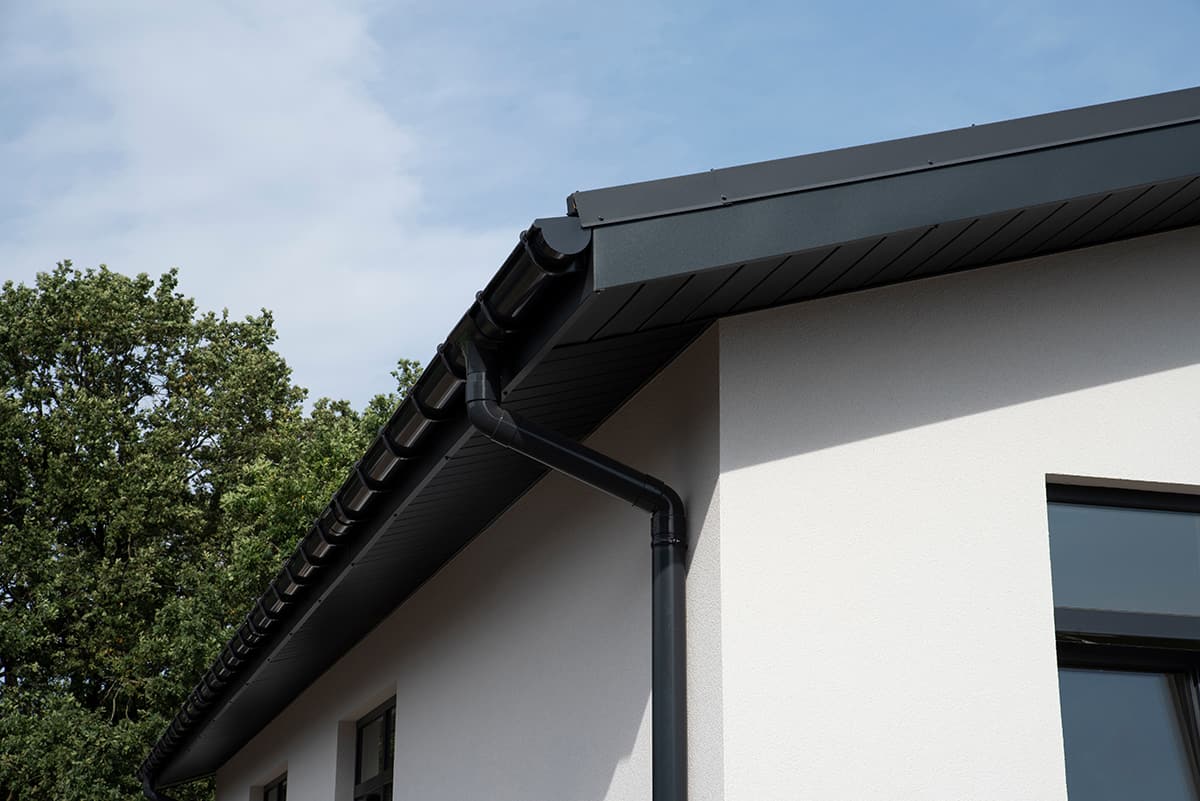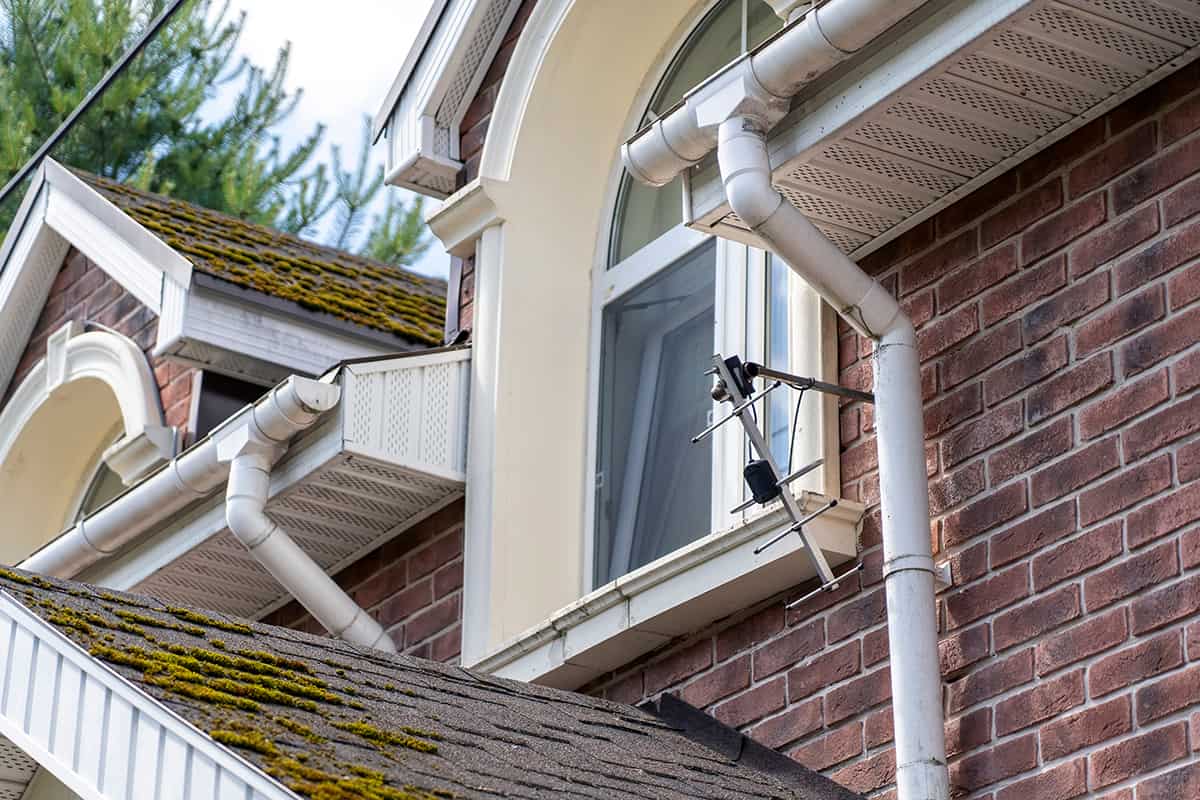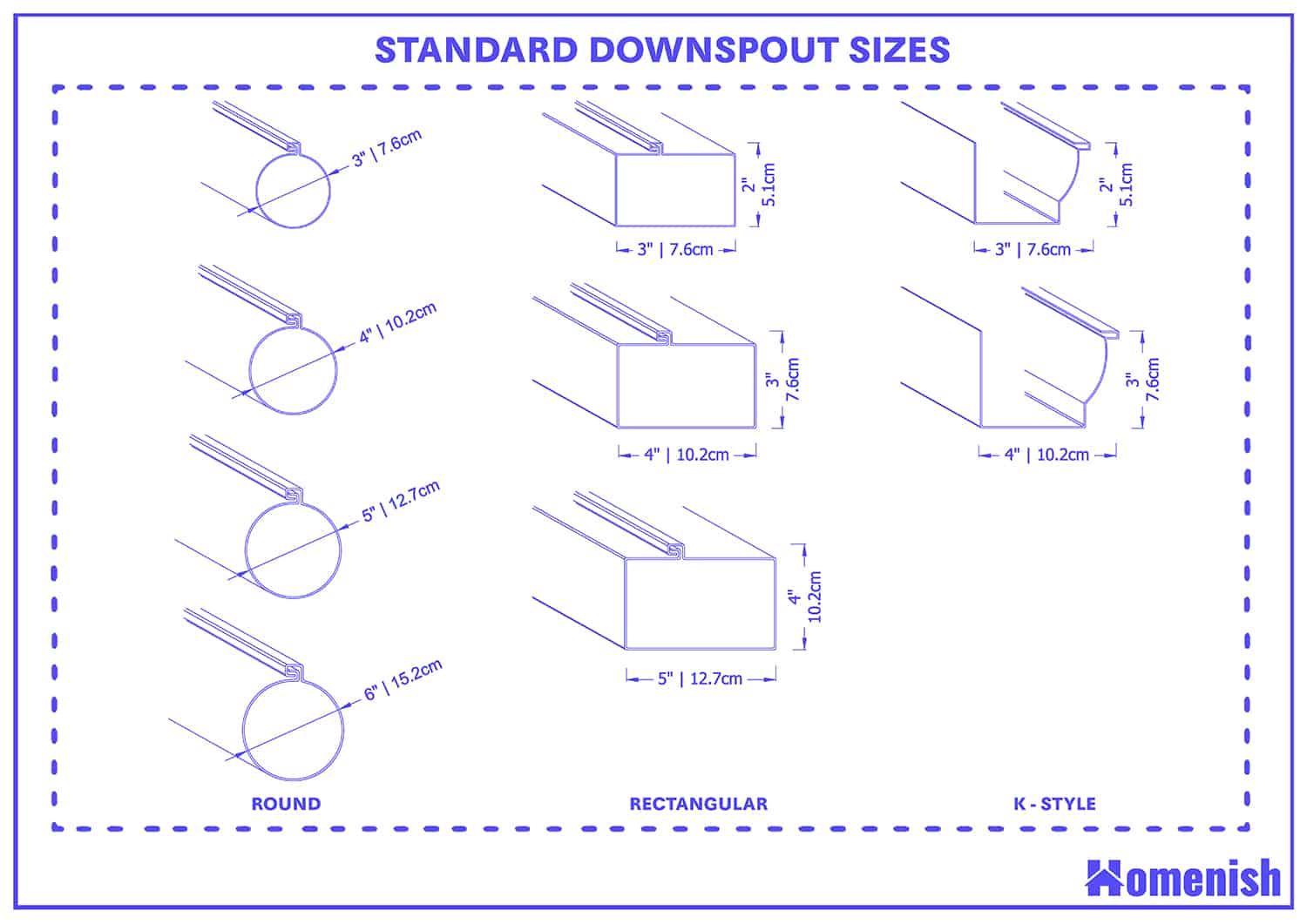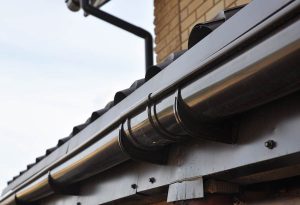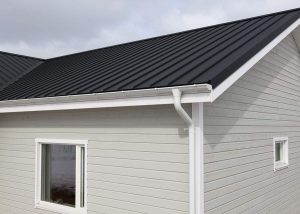If you are replacing your guttering or need to fit a new downspout, then you will need to calculate the right size. Having the right-size downspout is going to be vital to ensuring your whole gutter system works efficiently, therefore preventing expensive problems or damage to your home.
What is a Downspout?
A downspout is a vertical part of the guttering system that is essential for the correct running of the gutters. While the horizontal gutters that run around the top of a house have the job of collecting rainfall, it is the downspouts that carry this water and direct it away from the home.
This is vital because, without angled downspouts, the water would be too close to the foundations of the house, potentially causing leaks in the basement or causing structural damage to the foundations.
Downspout Sizes and Types
There is no single standard downspout-size because different types of properties in different areas will have different guttering needs.
However, there is a range of standard downspout sizes to make it easier for the systems to fit together and easier for the homeowner to select which size they need. As well as coming in different sizes, downspouts also come in different types according to their shape and design.
Round Downspouts
Round downspouts come in 3 inches, 4 inches, 5 inches, and 6-inch sizes.These types of downspouts are compatible with half-round gutters.
A 6-inch gutter used with a 4-inch downspout will have a capacity of 95 gallons per minute, while an 8-inch gutter used with a 4-inch downspout will have a higher capacity of 110 gallons per minute.
Rectangular Downspouts
Urban homes in central city locations are more likely to have rectangular downspouts. These are rectangular-shaped and come in 2 inches by 3 inches, 3 inches by 4 inches, and 4 inches by 5 inch-size options.
K-Style Downspouts
This is the most common type of downspout, which is used in the majority of homes with a K-style guttering system. These downspouts come in 2 inches by 3 inches and 3 inches by 4-inch options.The most common size of K-style gutters for residential homes is 5 inches and 6 inches, though larger 7 and 8-inch options are available.
If you have a 5-inch K-style gutter, you will need a 2 inch by 3-inch downspout. If you have a 6-inch K-style gutter, you will need a 3 inch by 4-inch downspout.
Calculating Downspout Size
The-size of downspout you need is going to depend on a whole host of factors, and you’ll have to balance these points out and make the best decision from there.
Drainage area-size
The size of your roof is going to play a large part in determining the size of downspout you need because the bigger the roof is, the more rain it is going to collect and therefore need to drain away. You should calculate the square footage of your roof by taking the measurement from the peak to the eaves and then multiplying this number by the width measurement of the roof.
For larger-sized roofs, you can opt for larger downspouts, or you can place them more frequently across your gutter system. In a typical area with average rainfall, one downspout is required for every 25 feet of guttering.
If you doubled this, this would double the capacity of the downspouts and the speed at which they could carry water away from the house. At an absolute maximum, downspouts can be spaced 30 feet apart, but putting them closer together will improve the efficiency of the gutter drainage.
Roof pitch and shape
The pitch of your roof is an important factor in choosing a downspout because a roof that is at a steeper angle is going to encourage water to flow more quickly into the gutters.
If this is the case, you may wish to opt for a bigger downspout so that your gutter system can cope with the speed of water draining through it. Having a gutter system that is designed in line with the pitch of your roof is important because if the velocity of the water channeling off the roof and into the gutter is too great, then you are going to get overflow and sitting water around the foundations of your property.
Gutter size, type, and system
The type of gutters you have and their size will affect the size of downspout you need, and of course, the type will need to correspond. For example, a K-style gutter will need to be fitted with a K-style downspout.
When choosing a downspout-size, you will need to ensure that the downspout-size does not exceed the-size of the bottom width of the gutter.
The capacity of the gutter output and the downspout should also be compatible. For example, if the gutter has an output capacity of 150 gallons per minute, then the downspout should also have a capacity of 150 gallons per minute.
Expected rainfall
The expected rainfall in your area will affect your whole guttering system, as well as the downspout size.
For regions that commonly experience high volumes of rainfall in short time periods, larger capacity downspouts are better because these will be able to cope with the higher level and speed of the rainfall, directing it quickly away from the house and avoiding any issues with overflow.
If you live in a fairly dry area, then smaller capacity downspouts will suffice. You should be able to find out these details from your local weather bureau, specifically enquiring about rainfall intensity.
The intensity of the rainfall is measured in five-minute intervals of inches per hour and is described in gallons per minute, also known as ‘GPM.’
Gutters and downspouts are tested according to how many gallons per minute they can cope with, so you can figure out which size of downspouts is going to be most appropriate based on this.
